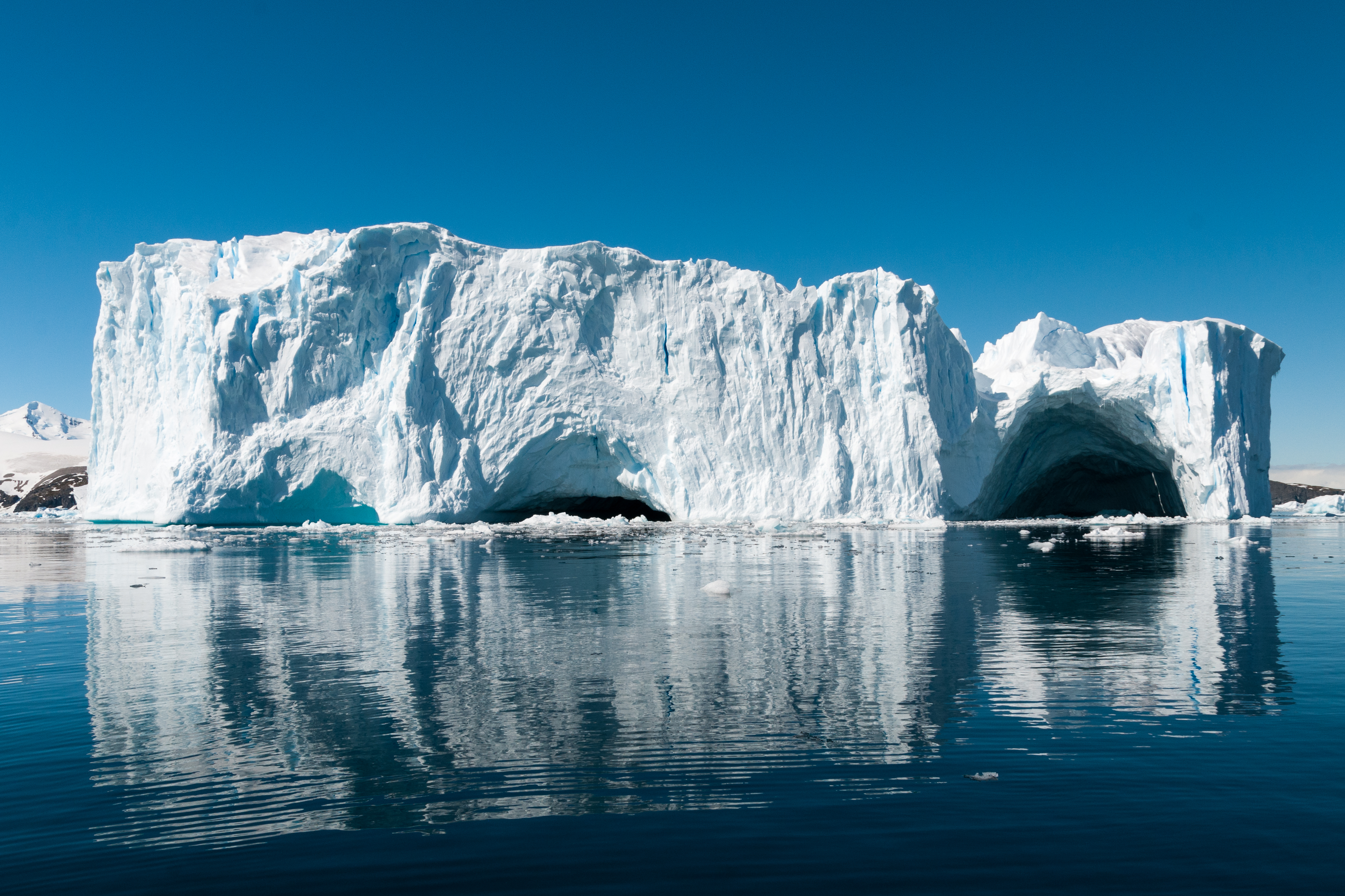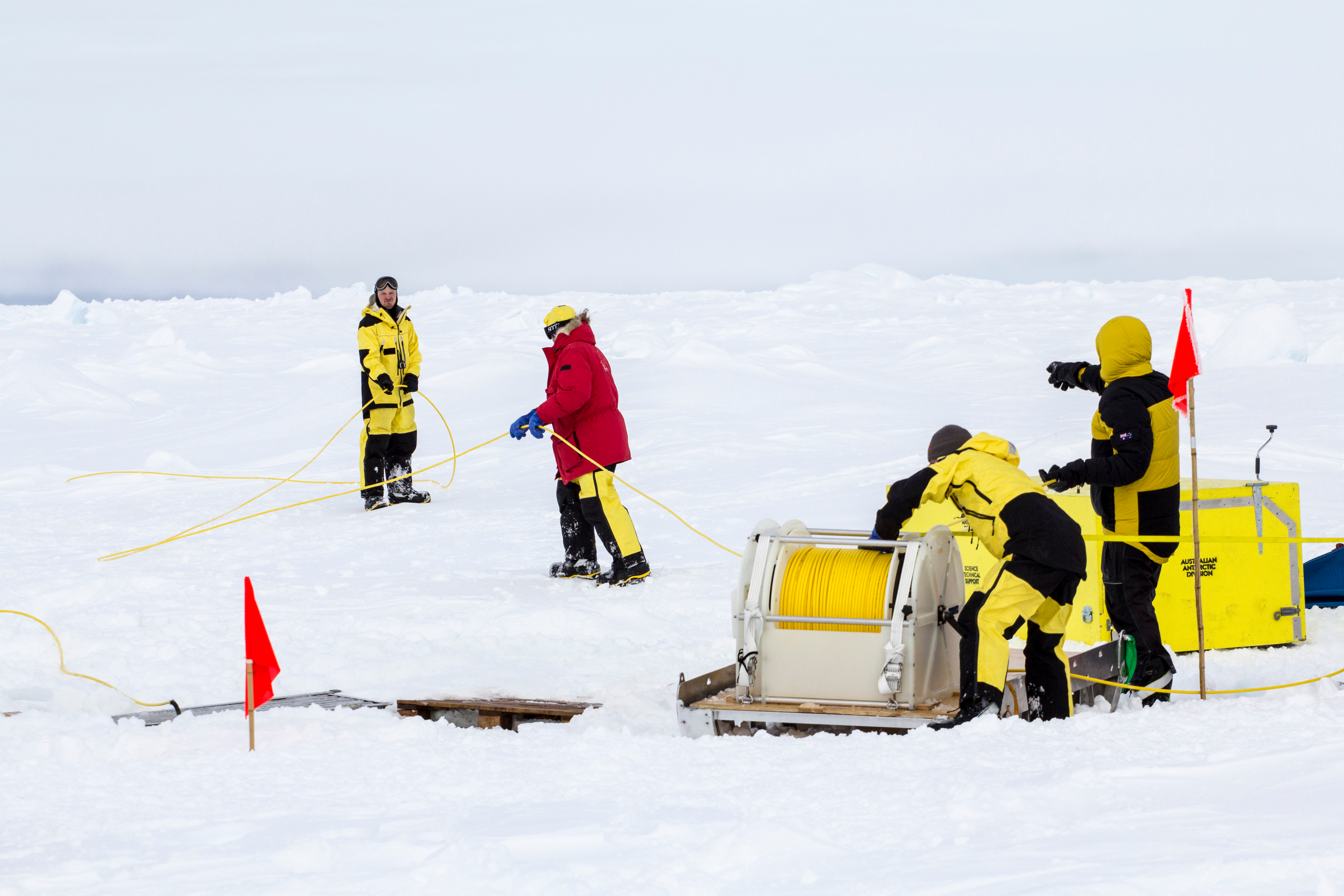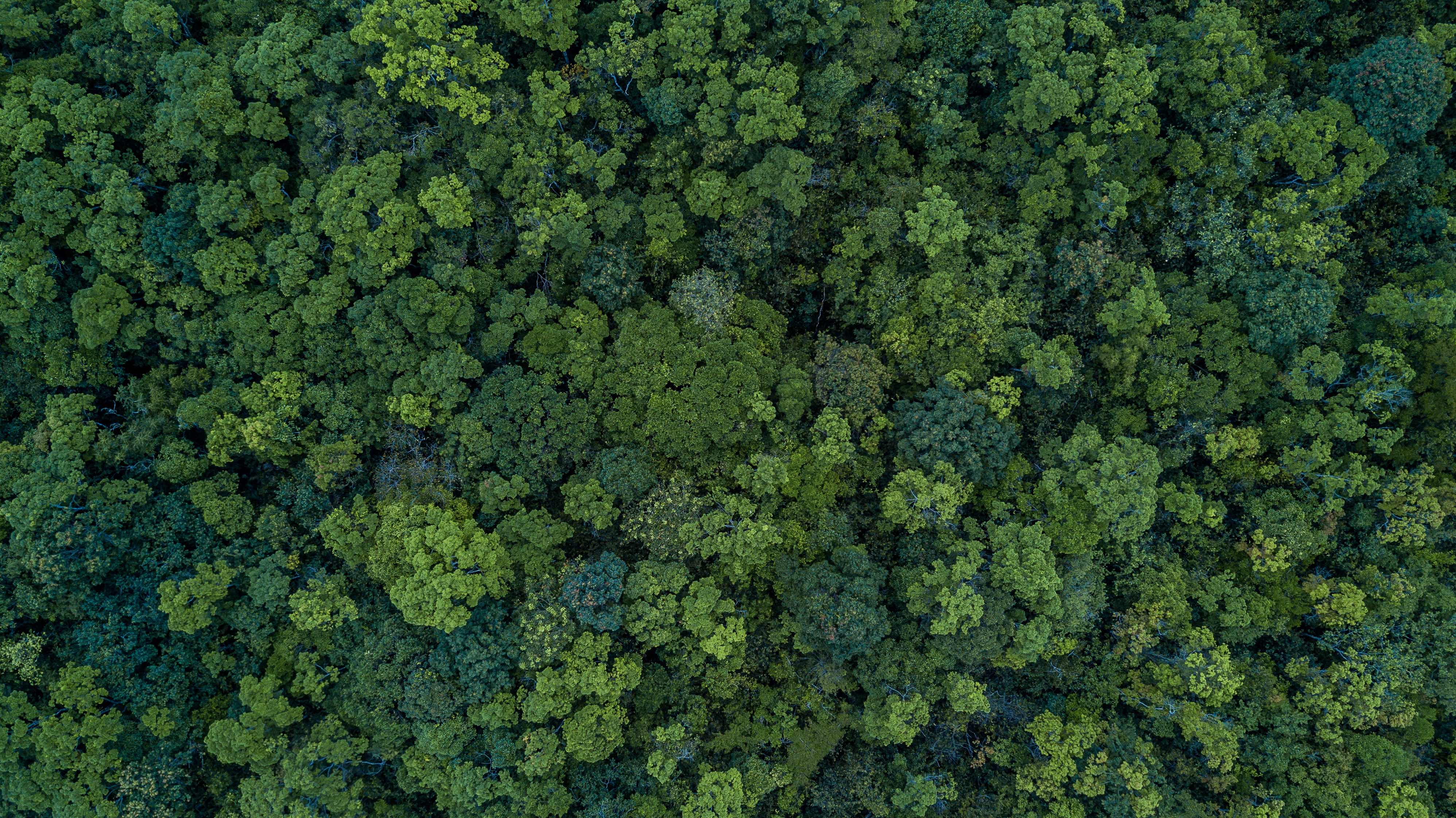How does climate change affect ice sheets?
Greenland and Antarctica are fascinating because they encapsulate important parts of climate change. We don’t think about the ice caps much. We think of them as something remote or something ancient, which they are, but they are such key parts of our climate system that the way that climate change is affecting them will last for many generations of humanity. Even if the impacts of sea-level rise take decades or hundreds of years to come about, the partial or total loss of the ice sheets will take millennia to replace. That’s a profound consequence of climate change. Even if we can adapt to extra coastal flooding, even if we move away from the coasts, even if we think we can live with that sea-level rise, the loss of the Greenland ice sheet or the West Antarctic ice sheet is something that would be hard to forgive ourselves for.
The two ice sheets of Greenland and Antarctica are quite different. They are affected by the climate in different ways. Greenland is a more straightforward case of what we think of when we think of melting ice. Greenland is a big block of ice sitting up in the northern hemisphere. It is mainly affected by climate change through the warming of the air over the ice sheet, which has a direct melting effect on the surface. Impacts from the ocean also have an effect. But primarily it’s about the balance between the melting at the surface and any snowfall that’s occurring, particularly in the centre of the ice sheet, where it’s colder and higher. So that’s a more standard way of thinking about melting ice.
Antarctica is more complex. It is still affected by the balance between surface melting and snowfall. But what’s much more complex and worrying about Antarctica, particularly the western part of the Antarctic ice sheet, is how the ocean is affecting it. The ocean around Antarctica, the Southern Ocean, is warming directly because of human activities. But there’s also a warm body of water called the Circumpolar Deep Water that circulates Antarctica.
For reasons that could be partly natural and partly human – probably more human – that warm water is reaching the underside of the ice sheet, under the ice shelves, and it’s eroding the ice from underneath. That erosion then affects the glaciers that flow into the ocean. If we are melting the ice sheet from underneath and the glaciers then speed up, it could form an instability: the marine ice sheet instability. The idea is that the process becomes self-sustaining and we lose more and more of the West Antarctic ice sheet because of this ocean effect.
The challenges of understanding Antarctica
That process is complex. It’s more difficult to predict what’s going to happen, when it’s going to happen, if it’s already underway. And it would be difficult to stop once it’s underway, even if we cooled the climate back down. So, Greenland is a more standard example: you warm the air up, the ice melts, and if you cool the climate back down again, that melting will slow down or stop. But the impact of the Antarctic ice sheet is a wildcard. It’s harder to predict and could potentially have more serious consequences.
Antarctica is an uncertain part of future climate change, partly because it’s so difficult to measure. It is difficult to get there; it is a cold and hostile environment. It has always been considered a mystery of planet Earth, discovered and walked upon late compared with other parts of the world. And that’s still true. It is difficult to get under the ice shelves to measure how much is melting. We only have satellite records going back a few decades. We don’t have lots of weather data over Antarctica going back to the pre-industrial period, like we do for many other parts of the world. As a result, we have to deduce a lot from our understanding of the physical system of how the atmosphere works, how the ocean works, how ice flows. We have to use the limited data that we do have and computer models to understand how Antarctica might work.
Two factors: ocean melting and increased snowfall
There is another complication. We need to understand not only the visible surface of Antarctica and the less visible surfaces in the ocean but also the different compensating factors involved. It’s not a case of a simple melting where we lose ice in the future. In a warming climate over cold parts like Antarctica, there can actually be more snowfall, because the air can hold more moisture when it’s warmer. More snowfall over the central cold parts of Antarctica will lead to a building up of the ice sheet.
So, there are two compensating factors at work: melting from the ocean underneath and, in a warmer climate, more snowfall building up the centre of the ice sheet. We don’t know how those two compensating factors will play out in the future. It might be that, in the short term, the increased snowfall dominates and Antarctica gains ice. In the longer term, with the ocean melting, the potential for an unstable ice sheet might take over, and we could lose much more ice than we gain. There’s a subtle shifting balance between these two factors of ice loss and gain. That’s complicated to put together in climate models, in ice sheet models. And it depends most of all on what greenhouse emissions we have in the future, what our human behaviour is and what we do as a society, because that will make an enormous difference to the balance of those two things.
It’s important to think about computer modelling, climate modelling, in a nuanced way. At the core of climate models, such as models of Antarctica and Greenland, we have some key certainties. We have physics, physical laws and relationships in the natural world that have been well studied through observations, lab experiments, field work and so on. This provides secure foundations to how computer models will predict the future of climate change. It’s important to know how certain those are. But at the same time, there are always going to be gaps.
Some are gaps in our understanding because we don’t yet know exactly how things work. Some gaps exist because computer models always have limitations. For example, we cannot simulate every tiny detail of the earth system. We can’t simulate every molecule of air in the atmosphere. We cannot add every fish in the ocean, or every worm in the soil. There has to be a certain amount of simplification in our computer models, such as a simplification of scale. In a big region, we don’t have all of the fine detail, for example, at the metre scale or sometimes even the kilometre scale, but it could be tens of kilometres or even more.
Balancing certainty and uncertainty
It’s crucial to bear in mind the balance between the known and the unknown, the certain and the uncertain. The basic principles of things like sea-level rise are securely founded in our understanding of physics and other laws of science. But there are always going to be limitations to our knowledge. Exactly how fast will change occur? Exactly how will it vary in different parts of the world? We can be very sure that the sea level is going to rise in the future, but we might be less sure about how quickly, or how quickly that will respond to very high or very low greenhouse gas emissions.
The sea level will rise not just because of the melting of the ice caps but also because as the oceans warm, the water will expand. That expansion of the water leads to sea-level rise. This is a well-known physical law. You can measure it in a pot of water in a lab. But just how sensitive the Greenland ice sheet, the Antarctic ice sheet, the world’s glaciers are to climate change is more difficult to predict. We know the big picture, but the details, the compensating factors, the rate of change are the things that we’re still trying to pin down.
The vulnerability of ice sheets
The ice sheets are not these sleeping giants that are undisturbed by climate change because they have survived great cycles of ice ages and interglacial periods. They are sensitive; they are vulnerable. That’s something we’ve learned with the satellite record, particularly over the last few decades. We have seen much more rapid change, much more dynamic behaviour of the ice sheets. We have seen that the glaciers around the edges of the ice sheets can speed up in response to climate change. They are not great monoliths of huge chunks of ice that will survive anything.
More broadly in climate change, we’ve been refining our understanding of our place in nature. We might be humble and think of ourselves as not being able to affect the planet, or we might be confident that we are planet changers and movers. There are people at different ends of that spectrum. But we know that we’re changing the planet, and there’s no climate scientist who would disagree with that.
A shift in our view of climate change
Now, what we have to understand is how to live with that climate change and how to limit it. We keep learning new information on questions like: what are the potential surprises that might come about? What are the positive feedbacks that can lead to amplification of change? What are the things that we thought could be bad consequences of climate change that might not be so bad after all? In every area of climate science, we’re constantly refining our understanding of the risks and the consequences.
In the last couple of years, acknowledgement and understanding of climate change have increased globally. We finally have a more central view of climate change in our lives and in our futures. And we realise that we have to factor it into every decision and everything that we do. We can’t assume that the world is going to stay the same all our lives. We can’t assume that the weather outside our windows is going to be the same in future decades. We can’t assume that the risk of flooding our coasts is going to be the same. We can’t assume that the way that we live will be the same.
We have to factor climate change into every detail of our planning, of our expectations, of every facet of our society, including equality and how to help the vulnerable, the people who are already struggling to live with today’s extreme weather events. We have to factor in the fact that many of those extremes will get worse. And this has to be at the foundation of our thinking. That shift has finally happened.
Reducing greenhouse gases through extraction
People feel that this low-carbon transition is now inevitable. No matter what climate policies we put into place, no matter the particular regulations and laws, there’s now a momentum and an understanding that we have to move away from a fossil-fuel world to a low-carbon world. And what’s more: to start extracting carbon dioxide from the air faster than we put it in. People don’t know much about this idea of negative emissions, or carbon dioxide removal, which is going to become more and more important to our thinking as the decades go by.
We’re going to have to undo the climate change and the emissions that we’ve put into the atmosphere by extracting the carbon dioxide back out of the atmosphere and locking it up somehow, whether that’s in trees, underground or at the bottom of the ocean. There are lots of possibilities, all with pros and cons. But we’re at a point where we can’t slow down and cut our emissions enough to avoid the severe impacts of climate change. We have to peak and then reduce the greenhouse gases in our atmosphere by extracting them again. We have to acknowledge that we have already left it too late to avoid this extraction.
The interdisciplinarity of climate change
One of the things I love most about working in climate change is the interdisciplinarity. You have to learn about every aspect of the planet and of people, too. And you have to work with people who are experts in all of those different areas. I’m originally a physicist, and my PhD was in particle physics – not that related to earth sciences. What I love about moving into climate science is that it involves not just physics and maths but chemistry, biology, geology and the other sciences as well. It also involves human behaviour, psychology, decision-making under uncertainty and economics.
I have to be able to understand a bit of everything and to talk to the experts in these different areas. The experts are not just scientists, economists and academics but the people working with the problems on the ground, adapting to climate change, like coastal engineers: the people who are putting into practice what the scientists are predicting and inventing new technologies for energy or new ways to live for the future. That’s an incredibly rich and rewarding way to work. It’s an amazing privilege to work in a field that’s so broad and so interesting.
Why empathy is key to reaching new solutions
To understand someone who comes from a different field and background, you have to have a certain amount of empathy and understanding of where they’re coming from. What’s their perspective, what’s their background knowledge, what are their goals, what are their aims? What do they know? What are they trying to find out? That’s good practice for the human endeavour more generally. But we can’t just stay in our bubble of people that think the same as us, with the same background and the same knowledge.
We have to be able to reach out. We have to understand what people are trying to say to us and listen to them. We have to understand how to change the things that we say so that they can be understood by other people, too. That’s incredibly important in the wider picture of being a human. You have to see things from other points of view. And climate change being so interdisciplinary – the fact that it covers every facet of our life, every single part of the planet, of people, of the past, of the solar system – means that there’s probably no broader area that we could work in and no better way to practise talking to different humans.
Discover more about
Greenland, Antarctica and climate change
Goelzer, H., Noël, B. P. Y., Edwards, T. L., et al. (2020). Remapping of Greenland ice sheet surface mass balance anomalies for large ensemble sea-level change projections. The Cryosphere, 14(6), 1747–1762.
Wernecke, A., Edwards, T. L., Nias, I. J., et al. (2020). Spatial probabilistic calibration of a high-resolution Amundsen Sea Embayment ice sheet model with satellite altimeter data. The Cryosphere, 14(5), 1459–1474.
Nias, I. J., Cornford, S. L., Edwards, T. L., et al. (2019). Assessing Uncertainty in the Dynamical Ice Response to Ocean Warming in the Amundsen Sea Embayment, West Antarctica. Geophysical Research Letters, 46(20), 11253–11260.


